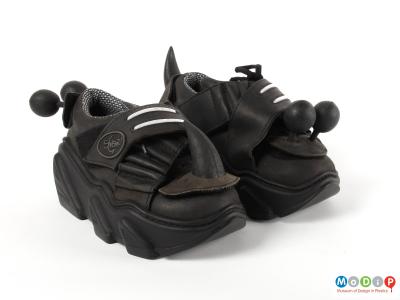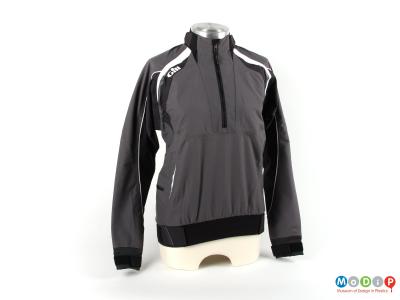One of the most familiar biomimetic objects made from plastics materials is Velcro® (1). The idea of a hook and loop touch fastener was developed in the early 1940s by Swiss electrical engineer George de Mestral. It was inspired by the way in which burrs clung to clothing and animal fur as a strategy employed by plants for seed dispersal. His idea was patented in 1948 and by the late 1950s the product went into commercial production. The name Velcro® is from the French words velours, meaning velvet, and crochet, meaning hook. Made from polyamide, the hook and loop fastening system has many applications. Many examples of its use can be found in MoDiP’s own collections some of which can be seen here (2 & 3).
The Power Suit vest (4) is made of Stomatex®, a biomimetic material that imitates the process of transpiration used by leaves. Made of a non-porous polyester, the membrane is patterned with dome shaped chambers, each with a tiny pore in the centre, which flex and stretch with the movement of the body. As a result, excess heat and perspiration are pumped out of the small pores, and drier cooler air enters at a pace in keeping with that of activity, creating a constant micro climate between the fabric and the skin.
The hydrophobic (water repelling) and hydrophilic (water loving) properties of the cellular structures of leaves are replicated in the fabrics used in the Gill sailing smock (5). The fabric is highly breathable and uses laminated moisture management fabric technology which has a durable water repellent outer finish, a hydrophobic laminate that is 100% waterproof and windproof, and a hydrophilic coated layer that transports moisture away from the skin.





